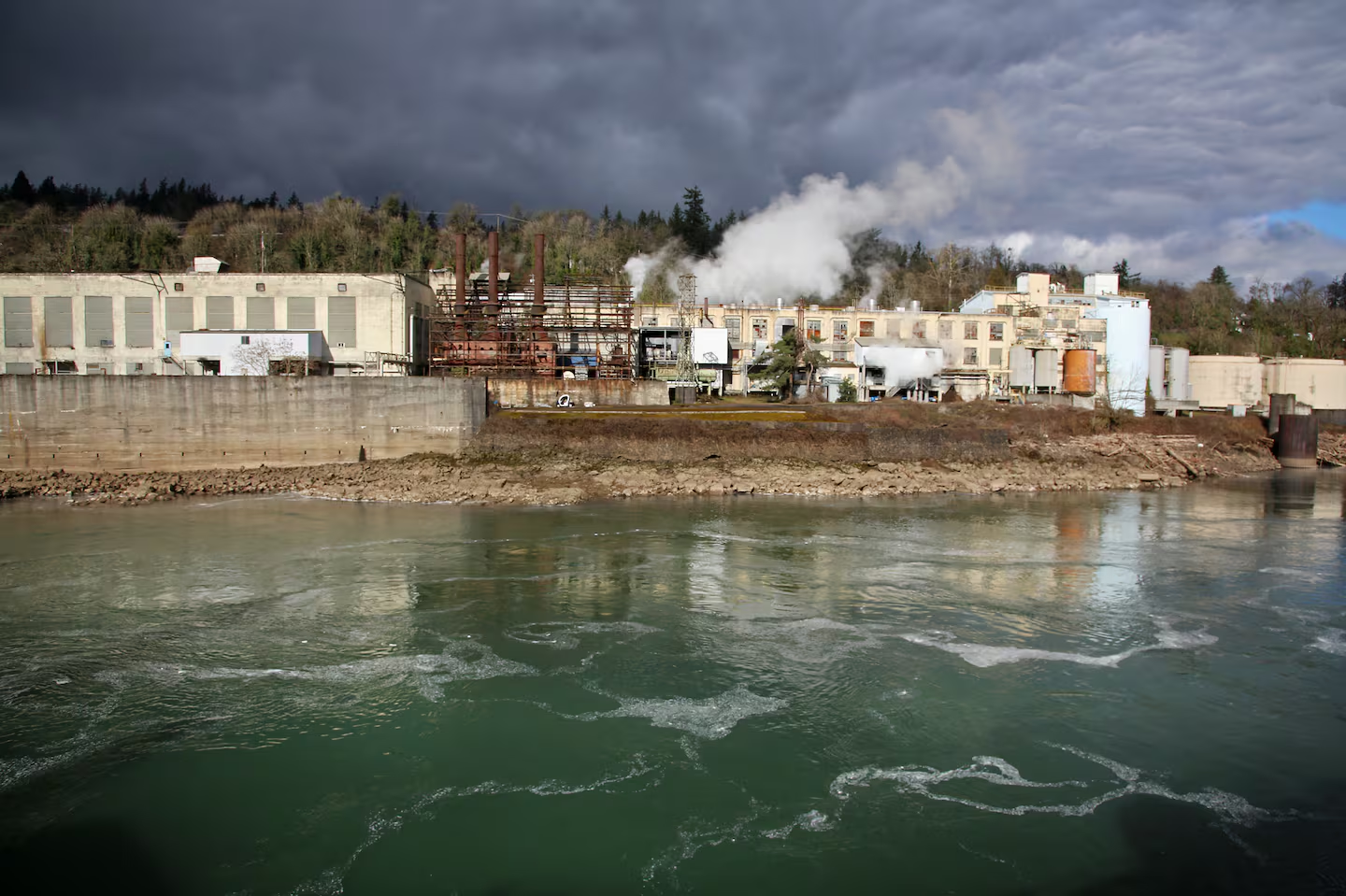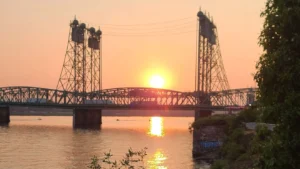Former Gov. Kate Brown leads effort to transform historic site
A major new development at Willamette Falls is taking shape after the Willamette Falls Trust secured an unprecedented $75 million in public and private funding. The trust, now led by former Oregon Gov. Kate Brown, plans to redevelop the former Willamette Falls Paper Company site in West Linn, marking one of the largest transformation efforts the area has seen in decades.
The initiative joins two other major projects already in progress at the falls: the Confederated Tribes of Grand Ronde’s tumwata village redevelopment and the long-anticipated Willamette Falls Locks restoration, which has yet to begin construction.
Also Read
A Significant Boost from State and Private Donors
Of the $75 million raised, $45 million came from the Oregon Legislature earlier this year. Additional contributions included a $25 million commitment from Connie and Steve Ballmer, along with roughly $5 million from other private donors.
Brown said the scale of funding reflects the long-term potential of the project.
“It’s a significant amount of money,” she said. “It shows just how much impact this project could have on the region for decades.”
Following Gov. Tina Kotek’s approval of the state allocation in August, the trust finalized its strategy and is now moving forward with early planning.
A Vision to “Rewild” a Historic Industrial Site
Brown said the trust’s core vision is to “rewild the built environment.” While the land cannot be returned to its pre-colonization state, she said the goal is to restore natural connections, expand public access and strengthen Indigenous ties to the falls.
“We want to reinvent the space,” Brown said, “to renew connections between people, the river and the falls.”
The project aims to transform the shuttered mill site into a place for public gathering, recreation and cultural understanding.
Land Acquisition Under Negotiation
One of the first steps is securing the land itself. The trust is currently in negotiations with Portland General Electric, which owns the hydroelectric facility at the falls as well as much of the 40-acre property below the former mill on Moore’s Island.
The Willamette Falls Paper Company closed in 2024, laying off more than 150 workers, and sold its assets earlier this year. Brown said the site offers ideal terrain for redevelopment with space for public viewpoints and restored natural features.
She said she envisions the site someday being considered for national heritage status or even UNESCO recognition.
PGE and the trust signed a cooperation agreement in 2023 to explore a possible sale, extended again in 2024. The trust hopes to finalize the purchase by early 2027.
PGE spokesperson Andrea Platt confirmed that discussions are active but no agreements have been reached. She acknowledged the site’s deep cultural significance to Northwest Tribes and said the utility continues to engage with the trust about its intertribal public access vision.
Land-Use Tensions Add Complexity
The negotiations come during a period of heightened conflict over land use at Willamette Falls. PGE is involved in a federal lawsuit with the Oregon Department of State Lands and the Confederated Tribes of Grand Ronde over a permit for a tribal fishing platform. In court, PGE has argued that its federal license requires expanded control of the land around the falls, a position that has frustrated Grand Ronde leaders.
A ruling on PGE’s request to condemn additional land at the falls is expected soon.
The lawsuit is one element of a broader dispute among five Northwest tribes with ancestral ties to the falls. Four of those tribes—the Siletz, Umatilla, Warm Springs and Yakama—are working together under the Willamette Falls Trust, which describes the redevelopment effort as Indigenous led.
Brown said the trust has invited the Grand Ronde tribe to participate, but collaboration has not materialized. The tribe withdrew from an earlier partnership in 2022 and has since pursued its own vision for the area.
“I remain hopeful,” Brown said. “These projects are complementary, and the impact is too important for us not to find a path forward.”
Tribal Leaders See New Momentum
For many tribal leaders, the closure of the paper mill represented a turning point.
Robert Kentta, a council member of the Confederated Tribes of Siletz Indians and part of the trust’s tribal leadership committee, said the opening of the land allows for new possibilities.
“The game really changed when the paper company closed,” he said. “It creates opportunities for public access that simply weren’t possible before.”
Kentta added that the leadership committee has been given extensive influence over project direction, reinforcing the project’s Indigenous leadership framework.
Reusing the Past While Building Something New
Once the land is acquired, the trust plans to remove much of the old industrial infrastructure—but not everything. Brown said they are exploring models from the High Line Network, which connects redevelopment projects nationwide that reimagine industrial spaces as public destinations.
Examples include Seattle’s redesigned Waterfront Park and San Francisco’s Crissy Field. The Willamette Falls Trust project is already listed on the High Line Network’s website, with Brown named as project leader.
While the falls redevelopment will focus heavily on natural restoration, Brown said they hope to creatively reuse some remnants of the former mill.
“What ends up on this space will be shaped by conversations with community members and tribal representatives,” she said.
A Long Timeline, but a Rare Opportunity
Construction and planning will take time. Brown estimates that the full development may take up to a decade to complete, potentially longer given the scope of the project.
Still, with financial backing secured, the trust is pushing forward quickly.
“This is truly a once-in-a-generation opportunity,” Brown said. “We may never get another chance. That’s why we’re moving with urgency. We have to make this happen.”












